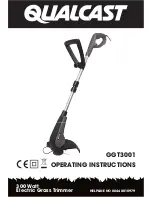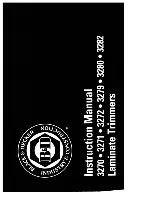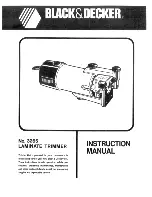
GB
- 263 -
3. Store the battery pack in a cool place, ideally at 15°C and char-
ged to at least 40%.
4. Lithium-ion batteries are subject to a natural ageing process. The
battery pack must be replaced at the latest when its capacity falls
to just 80% of its capacity when new. Weakened cells in an aged
battery pack are no longer capable of meeting the high power re-
quirements and therefore pose a safety risk.
5. Do not throw battery packs into an open
fi
re. There is a risk of ex-
plosion!
6. Do not ignite the battery pack or expose it to
fi
re.
7.
Do not exhaustively discharge batteries.
Exhaustive dischar-
ge will damage the battery cells. The most common cause of
exhaustive discharge is lengthy storage or non-use of partly di-
scharged batteries. Stop working as soon as the performance of
the battery falls noticeably or the electronic protection system trig-
gers. Place the battery pack in storage only after it has been fully
charged.
8.
Protect batteries and the tool from overloads.
Overloads will
quickly result in overheating and cell damage inside the battery
housing without this overheating actually being apparent exter-
nally.
9.
Avoid damage and shocks.
Replace batteries which have been
dropped from a height of more than one meter or which have
been exposed to violent shocks without delay, even if the housing
of the battery pack appears to be undamaged. The battery cells
inside the battery may have su
ff
ered serious damage. In this res-
pect, please also read the waste disposal information.
10. If the battery pack su
ff
ers overloading and overheating, the inte-
grated protective cut-o
ff
will switch o
ff
the equipment for safety
reasons.
Important.
Do not press the ON/OFF switch any more if
the protective cut-o
ff
has actuated. This may damage the battery
pack.
11. Use only original battery packs. The use of other batteries may re-
sult in injuries, explosion and a
fi
re risk.
Anl_PE_AHH_18_Li_Basic_SPK7.indb 263
Anl_PE_AHH_18_Li_Basic_SPK7.indb 263
15.01.16 13:02
15.01.16 13:02
















































